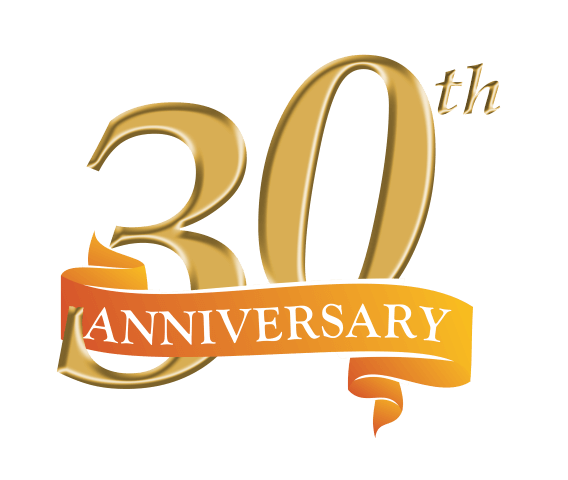Tooth extractions may be performed in your dentist’s chair, but the aftercare you perform post-procedure is one of the keys to a swift and successful recovery.1
A large part of the tooth extraction aftercare comes down to the diet you follow post-procedure. And while your dentist may have advised eating “soft foods,” that may be as vague to your ears as it is to ours.
This guide on what to eat after tooth extraction procedure is here to help. Read on for the best foods to eat after tooth extraction so you can help ensure a healthy and speedy recovery.
Why Is My Diet Important After a Tooth Extraction?
Tooth extractions—or the complete removal of one or more of your teeth from their socket in your bone—are often followed by a fair amount of pain, particularly in the first 24 hours after the procedure.
This is a totally normal and even expected part of the healing process, but it can worsen if you overuse your jaw to chew foods. (Hence, why your doctor suggested, if not insisted on, soft food.)
Furthermore, and perhaps even more importantly, chewing—as well as gargling, vigorously rinsing, spitting, smoking, and using a straw—can dislodge the blood clot that should form where your tooth once was and might cause unhealthy gums. Protecting this blood clot, which acts as a band-aid on the wound, is the golden ticket to ensuring a smooth recovery.
What To Eat After Tooth Extraction: 11 Top Foods
The diet you follow after a tooth extraction surgery is usually the most crucial in the first three days following your procedure. Consider picking up the following—or the ingredients to make them—before your dental appointment to make sure the right food items are available during the recovery process.
#1. Soup
Soups should be part of every post-procedure menu, especially during the recovery process from an extraction.
Depending on the brand and type you buy (or the kind you or your loved one make in advance), they can provide you with optimal nutrition and require little or no chewing. (And when you must chew—say, on a soft piece of potato or carrot in a bowl of minestrone soup—be sure to do so on the opposite side of your extraction.)
A few of the most delicious and nutritious include:2
- Chicken noodle soup – Chicken soup lives up to its fame by providing you with a delectable taste and a dose of protein, as well as calcium and magnesium. Whether you’re making yours at home or opting for canned chicken noodle soup, you can also increase its nutrient content by tossing in vegetables (cooked soft) and mild spices. Need a vegetarian option? Try adding a soy-based protein like tofu to vegetable soup, or
- Tomato soup – Tomato soup isn’t just sumptuous and soothing; it’s also rich in lycopene, which can help bolster your immune function. This is critical to any sort of recovery, particularly dental surgeries that may increase your risk of bacteria and infection.3
- Butternut squash soup – Butternut squash brims with essential vitamins and minerals, including Vitamin C, Vitamin A, and potassium.4
Two words of caution when assisting your recovery with soup, however:
- Avoid eating any type of soup hot, as hot liquids of any kind can break up your blood clot and delay your healing time (at best) and pose problems like dry socket (at worst).5 So, allow your soup to cool before you consume it.
- Two, refrain from adding hot sauce to your soups, and dodge spicy soups altogether: both can irritate your wound and exacerbate your pain.
#2. Soft Scrambled Eggs
Eggs are also a terrific source of protein, vitamins, and minerals, and, if scrambled soft, will be easy to consume.6 What’s more, Omega-3 eggs may naturally promote wound healing and accelerate your recovery.
To up your protein intake even more, add some cheese to the mix, which will be nice and soft once melted.
#3. Greek Yogurt
Greek yogurt teems with calcium and protein, while also soothing an irritated mouth. If plain Greek yogurt doesn’t do it for you, aim for a blended type such as honey and vanilla. This will help to prevent food particles, such as blueberries, from getting near your open wound.
#4. Oatmeal
Oatmeal provides excellent amounts of fiber, which naturally encourages heart health. Additionally, the world’s leading comfort food is rich in:7
- Magnesium
- Copper
- Iron
- Zinc
- Manganese
- Folate
- Phosphorous
Your best bet is to go with instant oatmeal as opposed to steel oats: it’s blended down to an easier-to-eat texture. You can also dilute it with water, milk, cream, or a nut milk. And while sugar and cinnamon practically transform oatmeal into a dessert with a pinch, hold off on both: Both may provoke aggravation in your open socket and tender mouth.
#5. Avocados
Avocados’ soft, creamy texture is one of the most ideal foods to eat after tooth extraction procedure: They taste like a vacation to somewhere sunny and boast impressive levels of:
- Potassium
- Vitamin C
- Vitamin K
You can easily mash or whip up an avocado; just avoid topping it off with lemon and pepper. Both might trigger irritation.
#6. Bone Broth
Bone broth can be a boon for those recovering from dental surgery, as it has been shown to have anti-inflammatory properties that could help you ward off an infection. As with soup, tea, and coffee, abstain from sipping bone broth hot and drink it lukewarm instead.
#7. Mashed Potatoes
Mashed potatoes are a great way to consume the fiber, nutrients, and calories you need to promote healing. (In fact, you may need more calories after a tooth extraction surgery—yes, even if you’re staying away from the gym based on your dentist’s orders.) Their silky, even grounding texture can also offer a profound deal of comfort as you’re recovering on the sofa.
#8. Cottage Cheese and Other Soft Cheeses
Rich in calcium, cottage cheese has a soft enough texture to eat with ease after a dental surgery. Furthermore, it’s high in protein, which organically supports wound healing.
For another snacking option, you can also try soft cheeses, like Boursin, Brie, or cream cheese.
#9. Smoothies
Smoothies are an expeditious and luscious way to obtain key nutrients, whether you choose to make (or purchase) a “green” smoothie with kale, carrots, and other veggies, or a fruit-based smoothie.
To boost your smoothie’s power, add a scoop of protein powder, and kefir or yogurt to sneak in some probiotics.8 These may help balance out your intestinal bacteria, which may be thrown out of whack after taking antibiotics and/or pain medications.9 Be sure to blend it well and dilute it with water, milk, or nut milk. This will make it much more drinkable—sans straw, of course.
#10. Pudding
A diet plan that includes pudding? After a tooth extraction, yes. Pudding requires minimal jaw movement and slides down easily. To keep yours somewhat on the healthy side, search for organic, low-sugar brands.
#11. Applesauce
Like pudding, applesauce can be consumed without placing strain on your jaw. Also like pudding? Reach for a low or no-sugar type: An overly saccharine taste, or a glut of sugar, may intensify your pain.
What Foods and Beverages Should I Avoid After a Tooth Extraction?
What you don’t eat is just as vital to your healing as the foods you do.
Eliminate the following from your diet for the first 48-72 hours and up to a week—depending on your dentist’s recommendation—and introduce them slowly back into your culinary repertoire after that. And when you do begin eating these foods again, remember to chew them on the opposite side of your extraction site:
- Coffee
- Alcohol (which may adversely interact with your pain medications)
- Grains/bread
- Most meat, especially beef jerky
- Spicy foods
- Citrus fruits
- Uncooked vegetables
- Chewy candy (or, really, candy of any kind) like caramel
- Crackers
- Chips
- Pretzels
- Hard toast
- Nuts
- Seeds
When Can I Start Eating Normally After a Tooth Extraction?
Usually, you can return to your normal diet within a week of your dental extraction, but this depends on the extensiveness of your procedure, your dentist’s recommendation, and whether a blood clot failed to form or became dislodged.
If either of these scenarios occurs, you may be at risk of developing alveolar osteitis—or what’s commonly called dry socket, a condition that can be exceptionally painful and may require treatment. The most common symptoms associated with dry socket include:8
- A foul taste
- Visible bone on the extraction site
- Radiating pain across your face and acute pain in and around the socket
- An odor emitting from the extraction site
If any of these emerge, it’s important to call your dentist immediately.
Obtain Ongoing Oral Health Care with West Coast Dental
Whether you’re having a wisdom tooth pulled or an incisor extracted, mindful and proper aftercare is imperative to your recovery—and the foods you eat play a central role in the process. By committing to a diet of soft foods that have a wealth of essential nutrients, you may prevent that oh-so-critical blood clot from dislodging, nourish your healing mouth, and accelerate your recovery process.
West Coast Dental & Orthodontics is the practice to have by your side on your path toward optimal oral health. Our immaculate and state-of-the-art general dentistry offices provide patients throughout Southern California with world-class care and attention.
Visit our dentist in Pomona, Torrance, Moreno Valley, or any of our dental clinics. You can also book an appointment with us today to start paving the way to a healthy, beautiful smile.
We have many Southern California locations for your convenience., whether you are seeking a dentist in Whittier, Long Beach, Valencia, or more… our dentists have you covered! Our staff is always ready to help!
Sources:
- Cleveland Clinic. Tooth extraction: procedure, aftercare & recovery. https://my.clevelandclinic.org/health/treatments/22120-tooth-extraction
- Healthline. Is soup healthy? Ingredients, benefits, and different types. https://www.healthline.com/nutrition/is-soup-healthy#healthy-soups
- Colgate. Bone infection after a tooth extraction. https://www.colgate.com/en-us/oral-health/tooth-removal/bone-infection-after-a-tooth-extraction-symptoms-treatment-and-prevention
- SF Gate. What are the health benefits of roasted butternut squash soup? https://healthyeating.sfgate.com/health-benefits-roasted-butternut-squash-soup-2318.html
- Dentaly.org. Can I drink coffee after tooth extraction? How long do I have to wait? Can I Drink Coffee After Tooth Extraction? When Can I? (dentaly.org)
- Healthline. What to eat after wisdom teeth removal: soft foods and more. https://www.healthline.com/nutrition/what-to-eat-after-wisdom-teeth-removal
- Healthline. 9 health benefits of eating oats and oatmeal. https://www.healthline.com/nutrition/9-benefits-oats-oatmeal
- Medical News Today. Everything you need to know about dry socket. https://www.medicalnewstoday.com/articles/318202
- Colgate. What to eat after tooth extraction. https://www.colgate.com/en-us/oral-health/nutrition-and-oral-health/what-to-eat-after-tooth-extraction#
- Archives of Medical Research. Gut microbiome and antibiotics. https://pubmed.ncbi.nlm.nih.gov/29221800/




